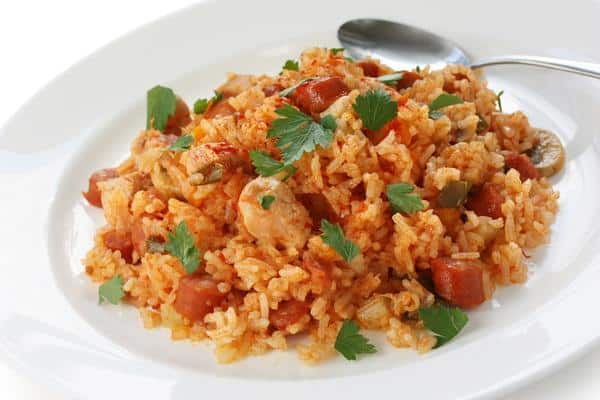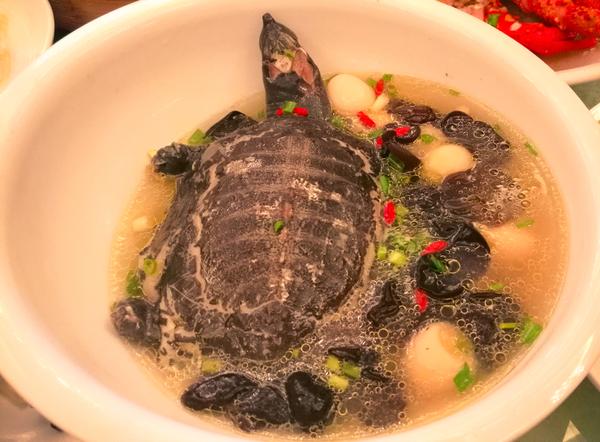
It’s no secret that New Orleans is one of the best food cities in the United States. Blending African, Caribbean, and European roots, the Big Easy is known for its unique Creole and Cajun cuisine that pays homage to Louisiana as a whole.
Step foot in any New Orleans restaurant, and you’re sure to find food like you’ve never tasted before. But beyond the food itself, traditional Cajun spots are all about delivering a one-of-a-kind dining experience. From the live jazz music to the signature cocktails, you’ll feel like you’re part of the Cajun family from the moment you walk in.
When staying at a Book Nola vacation home, we want to ensure you get the full, authentic Nola experience. To help you out, we’ve put together a list of local favorite Cajun and Creole dishes to try during your stay.
What is Cajun and Creole cuisine?
Let’s start with the basics. The words Cajun and Creole are often used interchangeably, but they do have distinct differences we want to break down for you.
The term “Cajun” often refers to people of Acadian descent. These were early French settlers who found their home in Southern Louisiana, a more rural part of the state. Cajun food is known for its rustic nature, rich flavors, and simple cooking methods. Think no-fuss meals seasoned with loads of spice.
Creole food, on the other hand, combines all of the influences of those who migrated to the city of New Orleans. Threading European, African, and Caribbean roots, Creole food is known for its tomato-based sauces and dominant use of seafood.
Today, the differences between the two cuisines are very subtle. The base of both cuisines lies in the “Holy Trinity,” which is equal parts onion, celery, and bell peppers. Beyond that, restaurants add their personal twist on traditional dishes based on their culinary roots.
All in all, Cajun and Creole cuisines have merged to represent Louisiana food culture as a whole.
Must-Try Cajun and Creole Foods
1. Gumbo

We can’t talk about Cajun and Creole foods without starting with gumbo. This traditional dish is a roux-based stew served over white rice and topped with local seafood or meat.
Roux is what gives gumbo its thick texture and rich flavor. Gumbo also always starts with the Holy Trinity caramelized in butter or bacon fat. Beyond the holy trinity and roux bases, you’ll find a range of toppings. Most New Orleans restaurants serve traditional seafood gumbo, combining crawfish, crabmeat, shrimp, and even alligator. Chicken and sausage gumbo is also a popular option.
Check out our guide to trying the best gumbo in New Orleans for the best local spots.
2. Crawfish Étouffée

Just looking at the name of this meal, you know you’re in for a Cajun specialty. The word “étouffée” is derived from the French word “to smother,” and that perfectly describes this indulgent meal.
Crawfish Étouffée is a thick stew served over rice, similar to gumbo. However, instead of a dark roux base, crawfish étouffée is made with a light roux, which gives it a sweeter taste. The “blonde roux,” holy trinity, and butter come together to make a decadent stew. Top it off with loads of crawfish and a steaming scoop of white rice, and you’ve got a crawfish étouffée.
We recommend ordering French bread with this meal, as it’s perfect for slopping up all that delicious buttery stew.
3. Jambalaya

Jambalaya is another New Orleans staple that combines a variety of culinary influences. Some call it the “Cajun paella” due to its Spanish roots.
This rice dish might seem simple, but the uniquely Cajun spices make it a stand out among Nola’s food scene. Beginning with the holy trinity, jambalaya is a mixture of rice, vegetables, spices, and meat. Traditionally, it is made with chicken and andouille sausage, but many Cajun and Creole restaurants put their own spin on it. Depending on where you go, you’ll find it topped with anything from boudin to Gulf shrimp to rabbit.
Jambalaya is served at most hole-in-the-wall spots in New Orleans, so its never too far from your day’s adventures.
4. Turtle Soup

Turtle soup is a local delicacy served in fine dining restaurants all around the Big Easy. Made with traditional French cooking techniques, this French-Creole dish elevates a humble ingredient: the American snapping turtle.
The soup has a beef stock base, giving it a rich, full flavor. Add in warm spices, turtle meat, herbs, and sherry, and it becomes a filling, delicious soup. Most restaurants serve turtle soup before your entree, but it can also be enjoyed as your main course with a side of French bread.
Some of our favorite French Quarter restaurants, such as Brennan’s and Galatoire’s, have turtle soup on their appetizer menu.
5. Po-Boy

We can’t overestimate the importance of the po-boy in New Orleans culture. You can find one in just about any gas station, corner joint, or Cajun restaurant around the city.
What started as the “poor boy’s sandwich” has become a crowd favorite, combining toasted French bread, meat fillings, and loads of toppings to form a meal fit for a king. The po-boy is traditionally filled with fried seafood or roast beef. But, over the years, restaurants have added their own twist to it.
These days, you can find anything from BBQ fried chicken po-boys to catfish po-boys. We recommend ordering it with “all of the fixins” to get the true experience. And if you’re looking for where to get the best po-boys in the city, we’ve got you covered.
6. Red Beans and Rice

As we all know, New Orleanians will find any way to celebrate, and that includes the start of a work week. Red beans and rice are a long-standing Monday dinner tradition in households all around Louisiana. But don’t worry – you can order this delicious Cajun meal in restaurants any day of the week.
What makes this simple dish so special is the preparation involved. Traditionally, red beans and rice involves simmering red or kidney beans for hours along with the holy trinity, sausage or pork, and Cajun spices. The slow cooking method forms a rich, deep flavor. Top the beans over white rice, and you’ve got another classic Cajun dish.
7. Fried Seafood Platters

New Orleans is one of the best cities to eat seafood in America, and we can attest to this. Seafood is the star of most Cajun and Creole dishes due to Nola’s access to fresh Gulf Coast ingredients. And if you want to try a little bit of everything, fried seafood platters are the way to go. New Orleans is teeming with world class seafood spots.
You’ll find seafood platters on many appetizer menus, but they are great as an entree, too. They typically come with a range of fried seafood, from Gulf shrimp to catfish to crab cakes. They are also served with a side of hush puppies, fries, or coleslaw. This traditional meal is a great way to taste the range of Gulf seafood represented in New Orleans.
Eat Like a Local
New Orleans is a city full of tradition, and the culinary scene is no different. Cajun recipes have been passed down for generations, making their way to local restaurants for you to enjoy.
When you stay at one of our vacation rentals, be prepared to indulge in Cajun and Creole food! Whether you choose a local po-boy joint or fine dining seafood restaurant, we promise it will be unlike anything you’ve tasted before.
Latest Articles

6 Best Neighborhoods to Stay in New Orleans

Best Time to Visit New Orleans: Weather, Festivals & Travel Tips by Month

A Local’s Guide to Planning the Ultimate New Orleans Bachelorette Weekend

